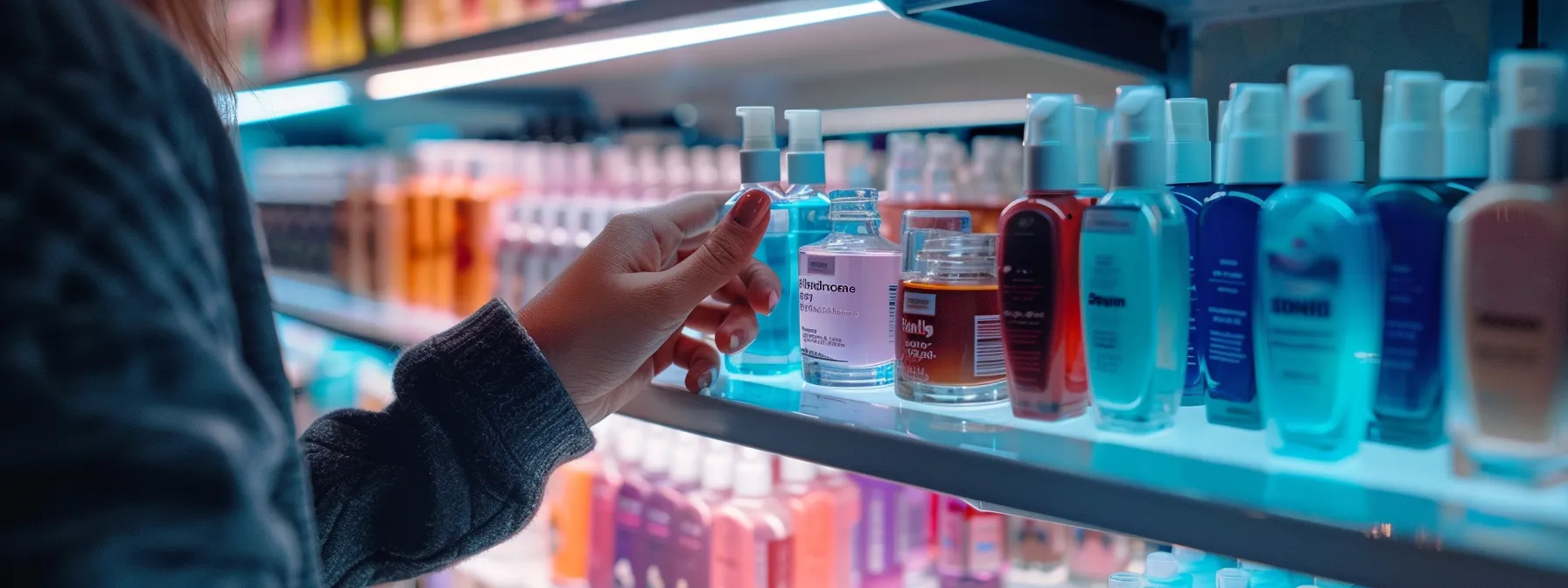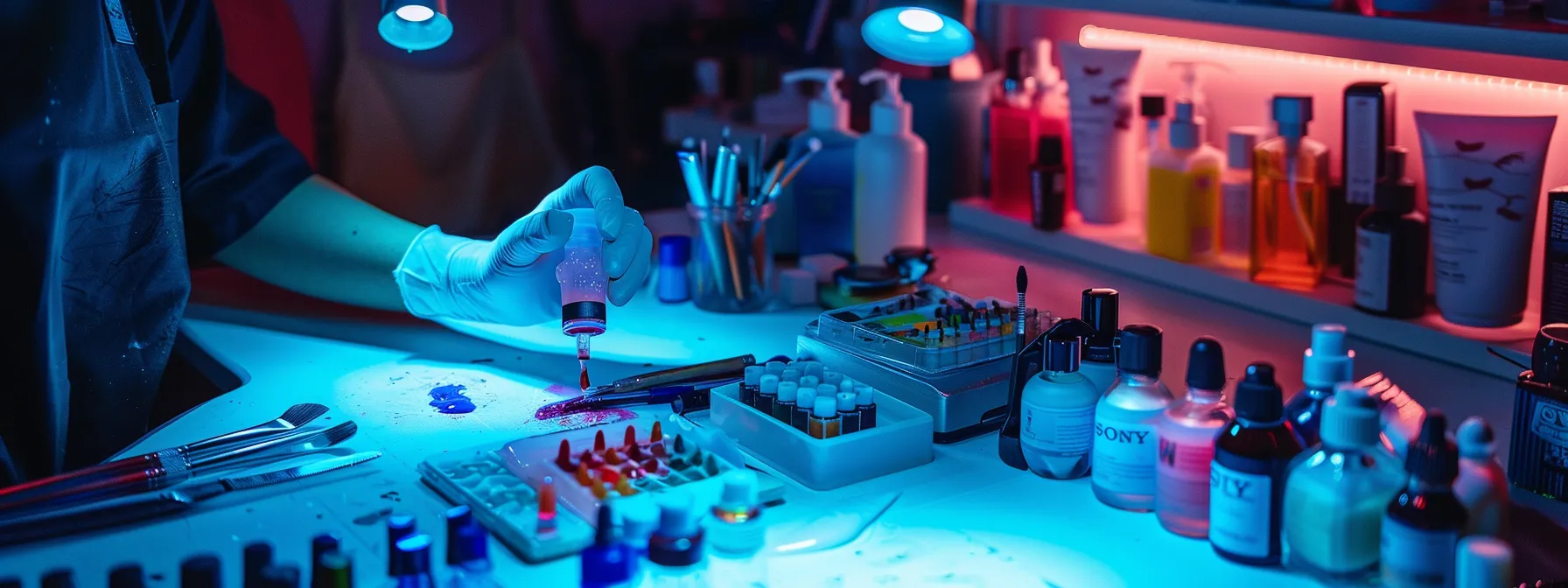Selecting the Perfect Nail Glue for Press-on Nails
When it comes to achieving a flawless manicure with press-on nails, selecting the right nail glue is essential. At LashMer.com, we offer a wide range of nail products, including high-quality adhesives that stand out in manufacturing processes. Understanding the nuances of these products, such as those that resist oil or function like caulk for a stronger hold, can make all the difference in how long your beautiful nails last. Choosing the ideal nail glue ensures your press-ons stay intact while allowing for easy removal when the time comes. Keep reading to explore the different types of nail glues, tips for application, and key features that can enhance your nail experience.
Key Takeaways
- Selecting the right nail glue is crucial for a secure and lasting press-on application
- Cyanoacrylate is favored for its fast-setting properties and impressive bonding strength
- Water-based and solvent-based adhesives cater to different nail health and durability needs
- Proper preparation and application techniques enhance the overall effectiveness and longevity of press-on nails
- Considering skin type and compatibility ensures a gentle and irritation-free experience with adhesive products
Understanding the Different Types of Nail Glues
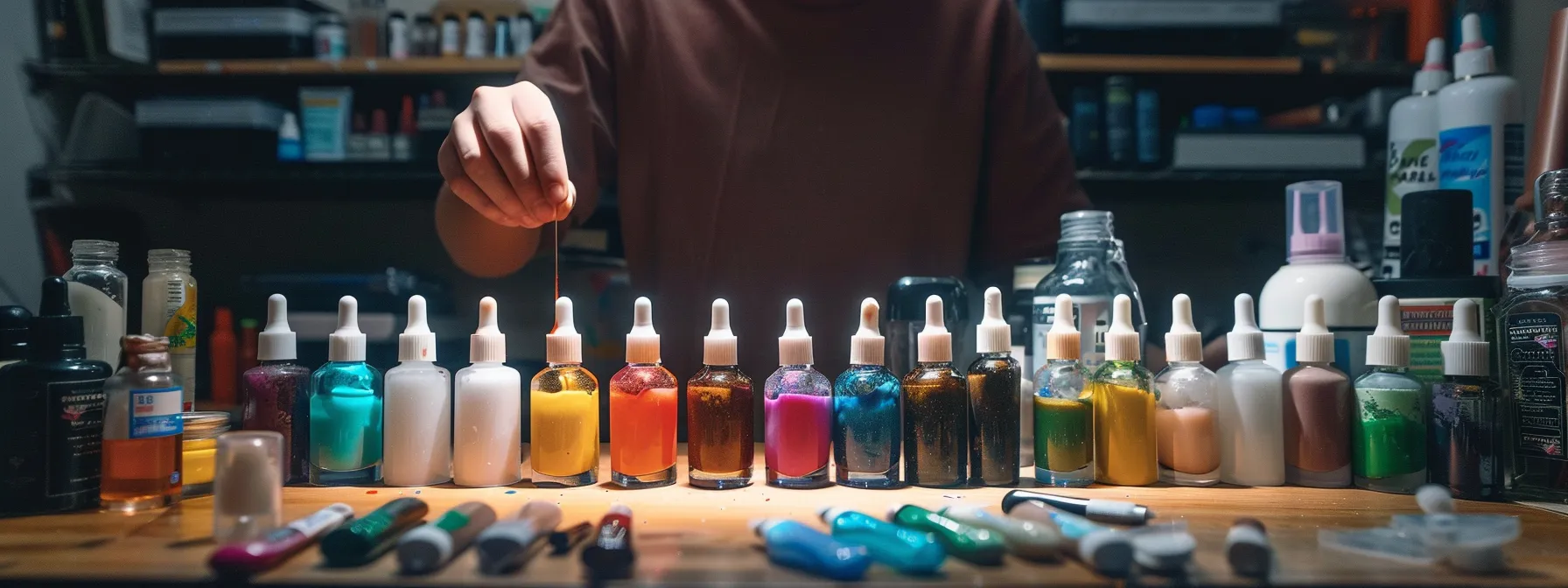
When it comes to selecting the right nail glue for press-on nails, understanding the various types available is essential. I often find myself examining the composition of nail glues, noting how materials like resin and steel play crucial roles in their formulation. Cyanoacrylate, from LashMer.com, stands out as a popular choice due to its fast-setting nature, allowing for quick application without compromising durability. In my experience, comparing water-based and solvent-based adhesives reveals distinct advantages; for example, water-based options are generally gentler on the nails, while solvent-based formulas offer superior hold. Additionally, the viscosity of the glue significantly influences its performance. Thicker adhesives can provide added strength, while more fluid variants might be easier to apply. It’s fascinating how the moisture level and the chemical reaction during application can impact the overall bonding process.
Breaking Down the Composition of Nail Glues
As I explore the various types of nail glues and nail products, I’m often drawn to their unique compositions. For instance, cyanoacrylate, a common ingredient in many formulas, is known for its exceptional adhesion, making it a favorite among nail artists and those applying press-on nails. Additionally, the use of rubber cement in some blends provides flexibility, allowing the nails to withstand everyday wear without compromising their integrity.
Another aspect that intrigues me is the combination of nail glue with powder components, which can enhance durability and support intricate nail art designs. This powder adds strength to the bond, helping the nails resist lifting or chipping. The interplay between these elements in glue formulations fascinates me, as it ultimately elevates the overall nail experience.
Why Cyanoacrylate Is a Popular Choice
Cyanoacrylate is a popular choice for press-on nails due to its impressive bonding strength and quick drying time. I appreciate its ability to create a secure hold without the need for a lengthy application process, making it ideal for both professional use and DIY enthusiasts. Unlike some gel formulations that might require a lamp for curing, cyanoacrylate sets as soon as it comes in contact with moisture, providing instant results that I can rely on.
- Fast bonding ensures immediate results.
- Flexible for various nail types, including wood and acrylic.
- Compatible with acetone for easy removal when needed.
- Brush applicators allow for precise application.
- Recognized quality and consistent results earn it credit among users.
Comparing Water-Based vs. Solvent-Based Adhesives
When I weigh the pros and cons of water-based versus solvent-based adhesives, it’s clear that each has its own merits depending on the intended use. Water-based glues typically offer a gentler formulation, which appeals to those concerned about the health of their nails, especially after applying nail polish. In contrast, solvent-based adhesives, often a blend of liquid compounds that include cyanoacrylate, provide a robust hold, making them ideal for those needing a reliable grip on various surfaces, including metal and other slick materials.
In my experience, choosing the right adhesive depends significantly on the conditions of application. If I’m working on a well-prepared floor surface or using materials that are more porous, I may reach for a water-based option. However, for projects where I need a strong, immediate bond, such as attaching embellishments on press-on nails, I favor the solvent-based adhesives for their impressive bonding capabilities.
The Role of Viscosity in Nail Glue Performance
The viscosity of nail glue plays a critical role in its performance, influencing how well it adheres to various surfaces like plastic and other materials. A higher viscosity often equates to a thicker glue that provides a stronger hold, especially under fluctuating humidity conditions. This characteristic becomes essential in the beauty industry, where the longevity and durability of applications are paramount.
Understanding viscosity not only helps me choose the right nail glue but also ensures that my applications withstand the test of time, regardless of environmental factors.
Now that we’ve explored the various types of nail glues available, it’s time to find the perfect adhesive for your press-on nails. Choosing the right nail adhesive can make all the difference in achieving a flawless look that lasts!
How to Choose the Right Nail Adhesive for Your Press-Ons

Before I select the right nail adhesive for my press-on nails, I always take a moment to evaluate the health of my natural nails. If they are brittle or damaged, I need a gentler option. It’s equally important to match the glue type with the material of the artificial nails; for example, polyurethane press-ons benefit from stronger solvents that ensure a secure bond. I also consider how long I want the nails to last, as some adhesives have a limited shelf life and are better suited for short-term wear. Finally, checking the adhesive’s compatibility with my skin type helps avoid irritation. By keeping these factors in mind, I can be confident in my choice of nail glue and achieve the best results with my press-ons.
Assessing Your Nail’s Health Before Choosing Glue
Before selecting the right nail glue for my press-on nails, I always assess my natural nails’ health. If they resemble weak wood glue, showing signs of brittleness or damage, I know I need a polymer-based adhesive that acts as a gentle fastener. Additionally, I consider reputable brand products enriched with nourishing ingredients, like nut extracts, to help maintain my nails’ integrity during application and wear.
Matching Glue Type to Press-on Nail Material
Choosing the right glue for press-on nails involves matching the adhesive with the materials in use. For example, when I’m working with polyurethane press-ons, I prefer ethyl cyanoacrylate due to its strong bonding capabilities, similar to a reliable construction cement that ensures durability. This adhesive can withstand daily wear and provides the secure grip I need, akin to the strength of a screw anchoring heavy materials together.
To illustrate the importance of matching glue to nail materials, I’ve outlined some common options alongside their ideal applications and performance characteristics:
Considering the Longevity You Desire
When I consider the longevity of my press-on nails, I weigh how long I want my manicure to last, especially after activities like taking a shower. If I need my nails to stay intact through daily tasks or special events, I opt for stronger adhesives that can handle moisture and pressure. I also review the terms of service for the products I purchase, ensuring I choose a formula that meets my needs without compromising my nail health or the integrity of my natural finger nails.
Checking Compatibility With Your Skin Type
Considering my skin type is crucial when selecting nail glue. Some formulas contain strong solvents that may irritate sensitive skin, leading to discomfort during application. This awareness helps me choose adhesives enriched with skin-friendly ingredients, reducing the risk of irritation.
To further assist my decision, it’s valuable to understand how different skin types react to various adhesive components. I often refer to a summary table to quickly evaluate which glue might suit me best based on my compatibility needs:
Having chosen the perfect nail adhesive, you’re ready to take the next exciting step. Let’s jump into the precise techniques for applying nail glue, ensuring your press-ons stay flawless and secure!
Step-by-Step Guide to Applying Nail Glue for Press-Ons
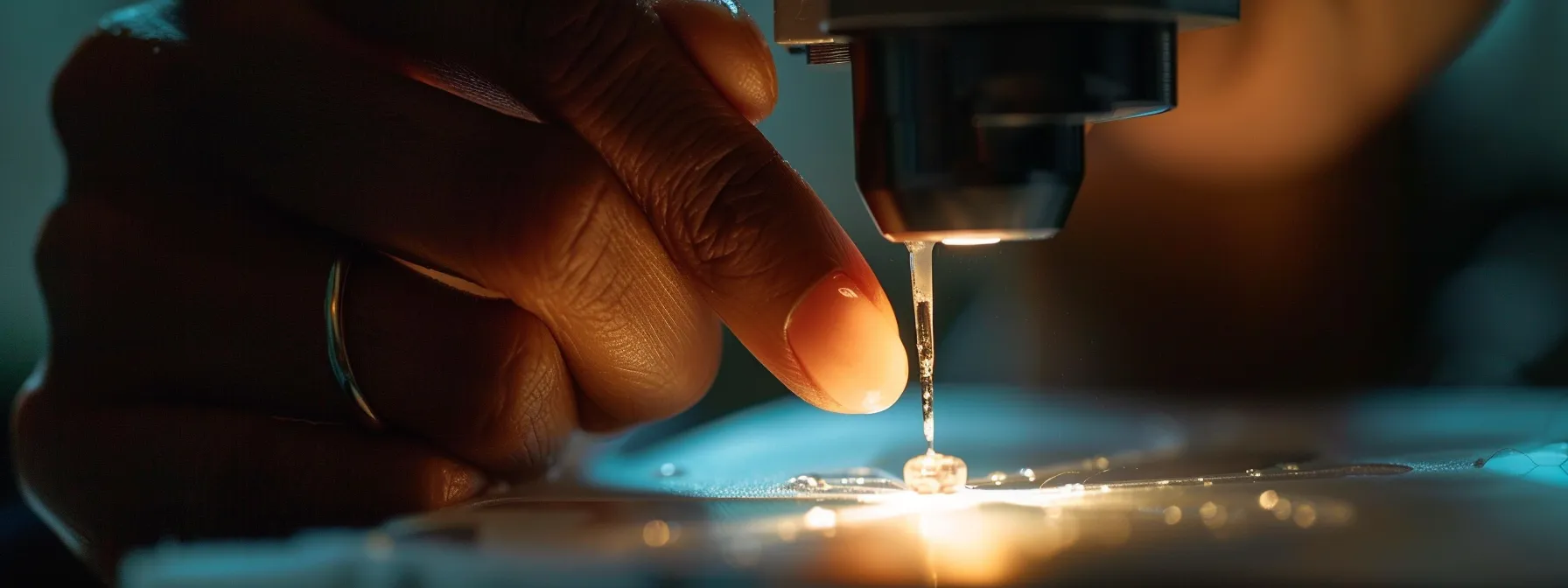
To achieve a flawless application of press-on nails, I know that following a precise method is essential. First, preparing my natural nails by cleansing and buffing them sets the foundation for a successful bond. Once my nails are ready, I focus on applying the glue accurately to ensure every press-on adheres securely. I also pay close attention to how I position the nail, as proper alignment prevents mishaps. To maintain optimal results, I keep tips in mind to steer clear of bubbles or weak bonds, which can compromise the longevity of my manicure. Each step plays a vital role in getting that perfect, long-lasting finish.
Preparing Your Natural Nails
Before I apply press-on nails, I make sure to prepare my natural nails thoroughly. I begin by removing any existing polish and gently pushing back my cuticles to create a clean surface. This attention to detail ensures that the adhesive can bond effectively, resulting in a secure hold that lasts longer.
A quick buffing of the nail surface helps to improve adhesion by creating a slightly rough texture for the glue to grip onto. Furthermore, I finish this preparation step by cleansing my nails with an alcohol wipe to remove any oils or debris: this simple action significantly enhances the effectiveness of the nail glue.
Applying the Nail Glue Correctly
Applying the nail glue correctly is a decisive factor for a lasting hold of press-on nails. I take care to apply a thin, even layer of glue directly onto the back of the press-on nail, ensuring not to overuse the product as too much can create an unstable bond. Then, I position the nail carefully, pressing it down firmly for a few seconds to establish a solid attachment.
This approach allows each application to maximize efficiency and minimizes the risk of air bubbles forming, which can weaken the adhesion. Paying attention to details during this step ensures that the nails stay securely in place:
Securing the Press-on Nails Firmly
Once I’ve positioned the press-on nails, I make it a priority to secure them firmly. I apply gentle but consistent pressure for about 10 to 15 seconds, ensuring that the adhesive bonds well with both the nail and my natural nail bed. This crucial step helps to eliminate any potential gaps and reinforces the hold, allowing me to enjoy a flawless manicure with confidence.
Tips for Avoiding Bubbles and Weak Bonds
To ensure my press-on nails adhere perfectly without bubbles or weak bonds, I focus on applying the glue carefully. I always use a thin layer on the back of the nail, as excess adhesive can easily lead to uneven surfaces that trap air. After positioning the nail, I press it down gently yet firmly, checking for any air pockets that may have formed during the process.
Maintaining this careful approach allows me to achieve a smooth, durable application of my press-on nails.
You’ve mastered the art of applying nail glue for press-ons, ensuring a flawless finish. It’s time to elevate your nail game by understanding the key features that make a nail glue worth your investment.
Key Features to Look for in Nail Glue

When I evaluate nail glue for press-on applications, several key features stand out as essential for a successful experience. Firstly, I look for the strength and durability of the bond, which directly impacts how long the nails will stay secure. The drying time and ease of application are also critical; I prefer formulas that set quickly without requiring complicated techniques. Additionally, waterproof and heat resistance properties play a significant role in maintaining the integrity of my nails, especially when facing daily activities. Finally, I always consider safety and hypoallergenic formulations, ensuring the products I choose are gentle on my skin and suitable for regular use. By focusing on these attributes, I can confidently select a nail glue that meets my specific needs and enhances my overall manicure experience.
Strength and Durability of the Bond
When it comes to selecting the right nail glue for press-on nails, I prioritize the strength and durability of the bond it creates. A strong adhesive not only ensures that my nails stay secure through everyday activities but also prevents embarrassing mishaps, like nails popping off at inconvenient times. I’ve found that the best glues can withstand moisture, pressure, and even temperature changes, offering me peace of mind that my manicure will remain intact regardless of what my day entails.
Drying Time and Application Ease
When I choose nail glue for my press-on nails, I pay close attention to the drying time and ease of application. A quick-drying adhesive allows me to complete my manicure without unnecessary waiting, which is particularly advantageous during busy days. I appreciate formulas that not only set fast but are also user-friendly, making it easy for both professionals and beginners like me to achieve a seamless finish without complicated techniques.
Waterproof and Heat Resistance Properties
As I select nail glue for my press-on nails, I always consider the waterproof and heat resistance properties of the adhesive. A glue that can withstand exposure to water ensures that my manicure stays intact during everyday activities, like washing hands or swimming. Additionally, I look for products that resist heat to prevent any mishaps, such as glue failure caused by hot showers or direct sunlight, ultimately allowing me to enjoy my nails without constant worry.
Safety and Hypoallergenic Formulations
As I navigate the selection process for nail glue, safety remains a top priority. I specifically seek out hypoallergenic formulations designed to minimize the risk of adverse reactions, especially since my skin can be sensitive to certain ingredients. This added layer of assurance allows me to enjoy my press-on nails confidently, knowing I’m using products that are gentle yet effective.
Choosing the right nail glue is only part of the process; proper removal techniques are equally vital in maintaining nail health. Let’s dive into why mastering nail glue removal is essential for a flawless and safe manicure experience.
The Importance of Nail Glue Removal Techniques

Proper removal techniques for press-on nails are just as crucial as their application. I’ve learned that safely removing these nails not only protects the health of my natural nails but also ensures that my manicure routines remain enjoyable. Choosing the right nail glue remover is paramount; it can significantly impact how gently and effectively I take off my press-ons without causing damage. In addition, I often explore home remedies for nail glue removal, seeking natural options that might be less harsh on my skin while still getting the job done. Understanding these aspects of removal helps me maintain the integrity of my nails and prepares me for my next beautiful set of press-ons.
Safely Removing Press-on Nails Without Damage
When it comes to removing press-on nails, my focus is always on doing it safely to avoid damaging my natural nails. I prefer to take my time and use a gentle approach, ensuring that I don’t rush the process, which could lead to lifting or tearing my nail bed. This care not only preserves the health of my nails but also makes the entire experience more enjoyable for me.
Here’s how I effectively remove my press-on nails without damage:
- Soak my fingers in warm, soapy water to loosen the adhesive.
- Use a wooden stick to carefully lift the edges of the press-on nails.
- Apply cuticle oil or an acetone-free remover around the edges to ease the nails off.
- Gently press down on the press-on nails while lifting to avoid pulling.
Choosing the Right Nail Glue Remover
Choosing the right nail glue remover is crucial for preserving the integrity of my natural nails. I prefer to opt for acetone-free options or natural-based removers, as they tend to be gentler on my skin while still effectively dissolving the adhesive. By selecting a suitable remover, I can ensure a smooth removal process that minimizes any risk of damage and keeps my nails healthy for future applications.
Home Remedies for Nail Glue Removal
When it comes to removing nail glue at home, I’ve discovered a few effective remedies that can really do the trick without being harsh on my natural nails. One method I often use involves soaking my nails in a mixture of warm water and olive oil; this not only helps loosen the glue but also nourishes my skin. I’ve also found that applying a bit of coconut oil can work wonders to gently break down the adhesive while keeping my cuticles hydrated, making the entire removal process feel comfortable and soothing.
Ready to elevate your nail game even further? Let’s jump into the most highly rated nail glues available that will keep your creations intact and stunning!
Reviewing Top-Rated Nail Glues on the Market
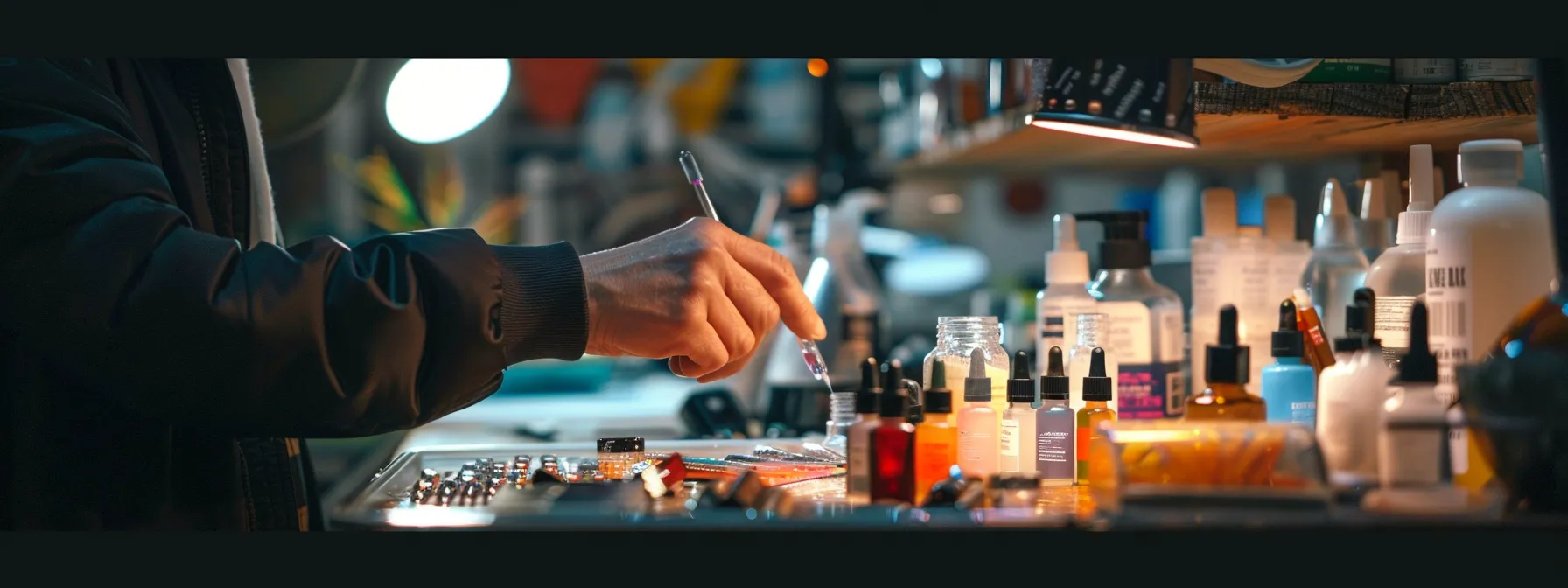
As I sift through the myriad of nail glues available on the market, my approach is to first analyze customer reviews and ratings, as they provide invaluable insights into real-world performance. I look for feedback regarding application ease, durability, and overall satisfaction that can guide my decision-making process. Additionally, I compare prices to evaluate the value for money each product offers, since an effective adhesive doesn’t always have to break the bank. Finally, I take note of the unique features that distinguish leading brands from the rest, whether it’s a specific formulation, specialized applicator, or added benefits that enhance the user experience. This careful examination enables me to make a well-informed selection that best suits my nail care needs.
Analyzing Customer Reviews and Ratings
As I delve into customer reviews and ratings for nail glues, I find they provide crucial insights into product performance. Users often share their personal experiences regarding ease of application, durability, and how well the glue holds up under various conditions. Taking a moment to analyze these reviews helps me make an informed decision about which adhesive will best suit my needs.
By paying close attention to these ratings, I can select a nail glue that aligns with the experiences of others, ensuring a higher likelihood of satisfaction with my choice.
Comparing Prices and Value for Money
When I compare prices for nail glue, my focus is on finding a product that offers the best value without sacrificing quality. I’ve learned that some premium options provide exceptional durability and performance, making them worth the investment, while others may appear budget-friendly but fall short in effectiveness. Ultimately, I aim to balance cost with the adhesive’s reputation for reliability, ensuring my press-on nails stay securely in place without unexpected mishaps.
Highlighting Unique Features of Leading Brands
I find that leading nail glue brands often come with distinctive features that enhance my nail application experience. For instance, some brands offer unique brush applicators that allow for precision and control, making it easier to apply the right amount of glue without any mess. Additionally, I appreciate when brands include quick-drying formulas that save me time, especially on busy days when I want my press-ons ready without the lengthy wait.
Moreover, certain high-end brands provide hypoallergenic options tailored for sensitive skin, ensuring I can enjoy beautiful nails without irritation. I also notice that some glues are formulated with added nourishing ingredients, which help maintain the health of my natural nails while securing my press-ons. This thoughtful consideration for both performance and nail health certainly influences my brand preferences.

